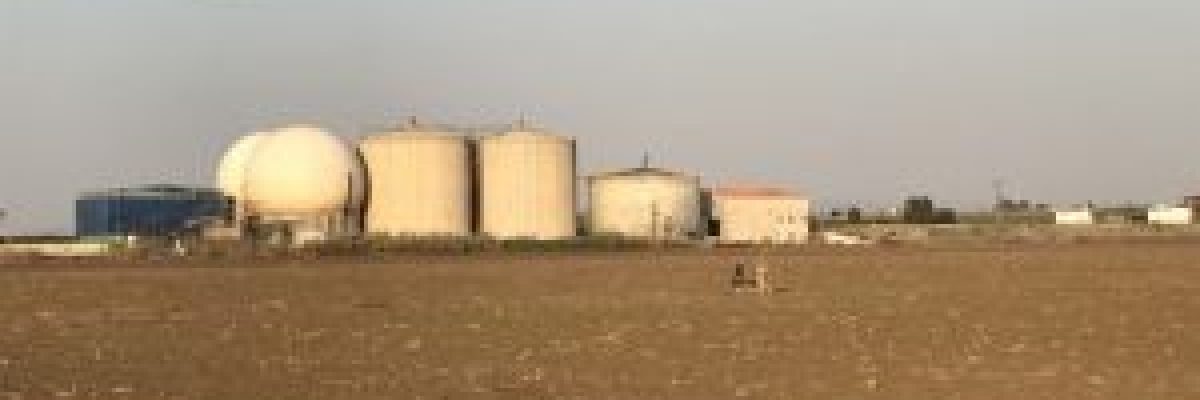One of the most significant and pleasing projects in wet waste recycling and green energy production takes place in an agricultural waste treatment facility in Emek Hefer, Israel.
The facility was established in 2002 by the Emek Hefer water association, with the aim of treating cow waste. Cow discharges are transported from local valley cowsheds by trucks to the center, thereby preventing severe environmental pollution of land, aquifers, streams, pungent odors and insect attraction. The facility also accepts wet household waste collected from Emek Hefer communities.
At the facility site, which is far from the residential communities, located in the heart of green fields, the waste undergoes a process of pressing (squeezing) and fermentation. In this process methane gas (bio-gas) is released. This is a flammable gas, which is an efficient source of energy, cheap and green (nonpolluting). The gas is drained into large spherical containers (picture) and then piped into generators that produce electricity.
The remaining material undergoes a process of sterilization and is returned to the cowsheds, where it serves as a platform for the animals. Some of the material turns to organic fertilizer, which is scattered in the many fields of the valley. We should learn from this efficient process -the time has come to recycle 90% of our waste and use the rest as an energy source.






